Having an outdoor pool brings forth images of gliding through crystal clear water, feeling the sun beating down on you as you break the surface. Nothing shatters that image quicker than discovering a Water Boatman bug soaking in the pool with you. Or a plague of Water Boatman.
So, how can you get rid of Water Boatmen from your pool?
The easiest way to get rid of Water Boatman bugs is to remove their food source by cleaning your pool thoroughly. Dirty pools full of organic debris attract these bugs, so maintaining a clean pool is the simplest way to get rid of them and prevent them from returning.
Keeping a pristine pool is a staple for any pool owner, so what could you be missing with your cleaning routine?
But, first, what are Water Boatman bugs, and why are they finding your pool?
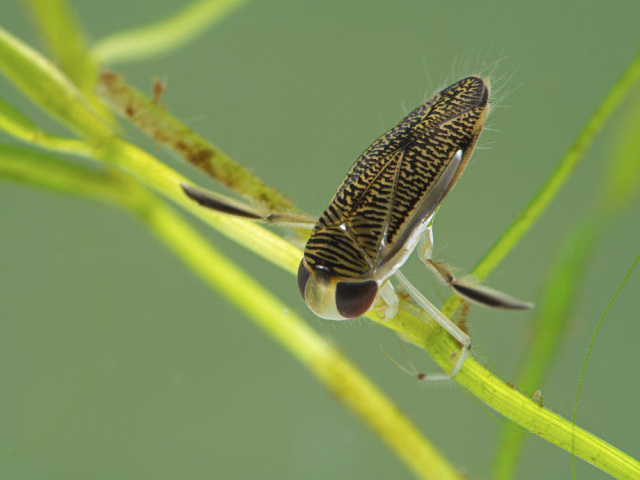
Article Contents
Differences between Water Boatman and Backswimmer Bugs
Water Boatmen and Backswimmers are commonly mistaken for each other but come from different families. Water Boatmen differ from Backswimers mainly in how they swim and what they eat.
These two bugs earn their boatman’s name because of their oar-like legs. But, Water Boatmen swim on their fronts, scouring the bottom for food. Whereas Backswimmers do just that, they swim on their backs and stay much closer to the surface. Also, Water Boatman have scoop-shaped feet while Backswimmers don’t.
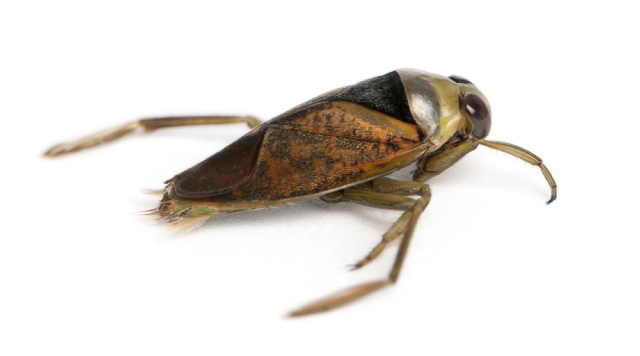
Also known as Greater Boatmen, Backswimmers are carnivorous and feed on tadpoles, small fish, and insects, unlike the herbivorous Lesser Water Boatmen, who focus solely on plant matter.
If you’re not sure if you have one of these bugs invading your pool, check our guide, How to Get Rid of Swimming Pool Bugs that Swim, to discover what pests are.
Where Do Water Boatmen Come From?
Water Boatmen are found worldwide in various aquatic habitats, but they favor ponds with plentiful vegetation. They are most active during the night and mating season (summer months).
So if they favor ponds, why are you finding them in your swimming pool?
Although Water Boatmen are strong fliers, they are clumsy and aren’t great out of the water, so they commonly fall into swimming pools or birdbaths.
And, because they are more active during the night and the summer months, it makes sense why you might close your pristine pool for the night only to discover a gaggle of them in the morning.
But what is attracting these bugs to your pool in the first place?
What Attracts Water Boatman Bugs to Your Pool?
There are four main reasons why your pool is attracting Water Boatmen:
- Attractive night lighting or pool lights
- A dirty pool
- A great source of food and…
- Surrounding vegetation
So, let’s dive in!
Attractive Pool Night Lights & Reflections
If your pool has pool lights (which you leave on during the night), this is a major culprit in attracting Water Boatmen. Like a moth to a light, Water Boatman bugs are also attracted to artificial or natural lights.
Water Boatman bugs are very adept at finding light reflecting off from water. To them, this signals a body of water where they can now make their home.
Between their increased nocturnal and summer activity (when pools are uncovered), nighttime pool lights draw these bugs to your pool.
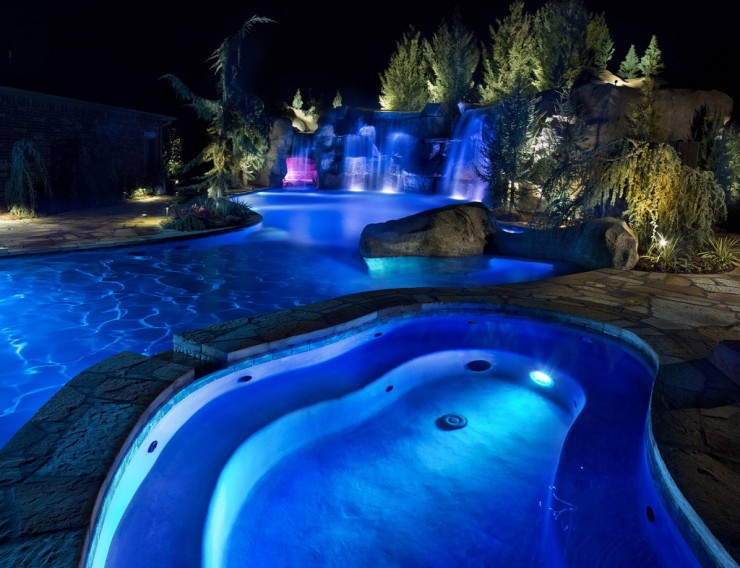
Dirty Pool Conditions
Aside from the attraction of pool lights, dirty pools provide the perfect living conditions for Water Boatmen.
These bugs love ponds because they usually have the presence of algae like a dirty pool would have too. Plus, there tend to be twigs, leaves, petals, and other debris, giving Water Boatmen an ideal purchase to stop floating to the surface.
If your pool pump is malfunctioning or there’s a blockage in your pool’s system, it can cause the water to stagnate. This is another draw for Water Boatmen and other bugs, such as mosquitoes.
Stagnant water and submerged (or floating) objects create the perfect breeding ground for many insect species to lay eggs, including the Water Boatman.
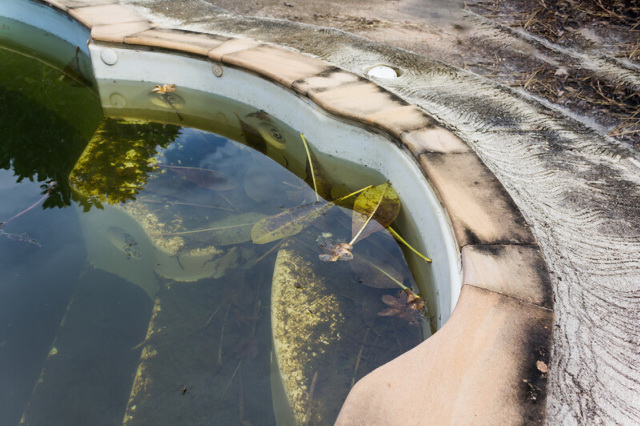
Food Source
It’s important to understand that Water Boatmen are primarily herbivorous (as opposed to the carnivorous Backswimmers), choosing plants and algae over insects and invertebrates.
So, a pool full of organic debris, plant detritus, and algae is their perfect food source.
Water Boatman bugs feed by injecting digesting enzymes into the plant or algae and sucking out the liquified insides.
Do Water Boatmen Bite?
Water Boatman bugs don’t bite as they are primarily herbivorous. However, Backswimmers can bite, so it’s important to find out what bug you’re dealing with.
Water Boatmen are relatively passive insects and quickly swim or fly away if disturbed. However, Backswimmers will bite if they feel threatened.
These bites are not poisonous, but they can be pretty painful. So, once you discover the bite, it’s important to disinfect it as soon as possible to stop possible infection.
A typical bite symptom is inflamed, raised skin that can be sore to the touch. If you’re concerned about the bite, make sure you consult with your healthcare professional.
How To Get Rid of Water Boatman Bugs
Now that you know that a dirty pool and the food source it provides is one of the biggest draws for Water Boatman, it makes sense that cleaning it will help rid of them.
Whether new to pools or a veteran, following these steps will eliminate every unwelcome Boatman (and other insects) in your pool.
So, in order:
- Skim the pool
- Brush down all poolsides
- Vacuum & Filter
- Adjust water chemistry
- Apply pool shock
- Run The Pump and Retest
1. Skim The Pool
Although Water Boatmen tend to spend most of their time submerged (only surfacing every 2 minutes), skimming the pool with a net will grab any surfaced ones and other floating bugs and debris.
2. Brush Down Pool Sides
Once you remove as much debris as you can, it’s time to get brushing. Using a heavy-duty pool brush head, scrub all the pool sides, not forgetting hard-to-reach areas like ladder joints.
Be as thorough as possible in removing stubborn algae growth. Even if you can’t see any, there are good chance algae are quietly growing, waiting to bloom.
3. Vacuum the Pool Floor & Filter
Considering Water Boatmen favor the bottom of their chosen water body, this is when you’ll get rid of most of these bugs.
When it comes to vacuuming, there are countless options to pick from. You might want the accuracy of manually vacuuming to ensure you’re getting every bug and sunken debris.
Or, if you trust in the skills of an automatic vacuum cleaner, let it go to town on the pool floor while you get your pool shock ready!
And when you’ve finished vacuuming, run your pool filter. You should be running it 8-12 hours per day in Summer.
4. Adjust Chemistry Level
Before applying shock, you need to make sure your pool is balanced so that the shock will work properly. Using pool test strips will give an accurate idea of what needs correcting.
The chances are your pH or alkalinity levels are off if you’re noticing algae. Algae grow at high pH, so it’s important to level your pH before shocking, especially if you’re using a chlorine shock. The pH level should be 7.4-7.6.
A high pH level will decrease the chlorine’s potency. If you want to double-check how to correct your pool’s pH, check out our guide, ‘How to Lower the pH in your Pool.‘
It’s also important the stabilizer levels are 30-50 ppm. If it’s higher than this, it’s better to lower it otherwise the shock will not be as effective.
5. Apply Pool Shock
Once the pool’s water chemistry levels are all normal, it’s time to shock the pool. Shocking the pool will kill off any organics in the water. Such as algae, bacteria, and natural debris, which could be a food source for the Water Boatman.
There are a few different shocks you can use. The majority of pool shocks are chlorine-based, but there are some non-chlorine shocks out there too. If you’re not sure which suits your pool best, check out our guide ‘Which Pool Shock Should You Use? (answered!)‘.
This isn’t a regular shock treatment, so experts recommend using a double dose of your shock to eliminate all microorganisms. For example, using the most popular shock, calcium hypochlorite, instead of using 1 lb (455 g) per 10,000 gals (38,000 L), use 2 lbs (910 g).
Handling pool shock can be extremely harmful if you don’t take the necessary precautions. So, if you want a refresher, our guide, How To Shock A Swimming Pool For Beginners (In 6 Easy Steps), has you covered!
6. Run The Pump, Vacuum, and Retest
After applying the shock, it’s time to run the pump to make sure it circulates the shock through the system as well as the water.
I recommend letting the pump for at least 8 hours before testing—ideally, 24 hours after using double or triple the usual shock dose.
Once it’s circulated, you may want to vacuum the pool again to double-check all foreign material is dead and gone. Then, make sure you retest the chlorine level before you go swimming again.
What Kills Water Boatmen Quickly?
Two methods to get rid of Water Boatmen quickly (under 24 hours). These are setting up a detergent trap or using an algaecide.
Seeing as Water Boatmen are attracted to lights at night and need to surface regularly, you can set up a trap.
At night, train a light at the deepest part of the pool and add a couple of spoons of liquid detergent or dish soap to the water. Water Boatmen will be drawn up to this area but won’t be able to break the surface. They will drown, and you’ll be able to scoop them out in the morning.
The other method that some pool owners have found success with was applying BioGuard Back Up algaecide, which killed the bugs within 24 hours.
Regardless of your chosen method, you must check and normalize the pool’s chemistry before swimming.
4 Ways To Prevent Water Boatmen from Returning
Once you’ve rid your pool of Water Boatman bugs, you’ll want to know ways to prevent them from ever returning.
1. Regularly Maintain Your Pool
Maintaining a thorough pool cleaning routine is the easiest way to prevent Water Boatmen from returning. Remove the food source, and they’ll quickly find a home elsewhere.
Maintaining a pool cleaning habit can be difficult. Some things need to be checked daily, and others only weekly. Luckily, our concise timing guide, How to Clean a Pool: A Time-Saving Guide, will help solve the struggle!
2. Get a Pool Cover
Because Water Boatmen are primarily nocturnal, an easy way to prevent them from finding your pool is to get a pool cover.
Getting in the habit of covering your pool when not in use is beneficial in keeping your pool healthy and free from organic and plant matter from getting in too.
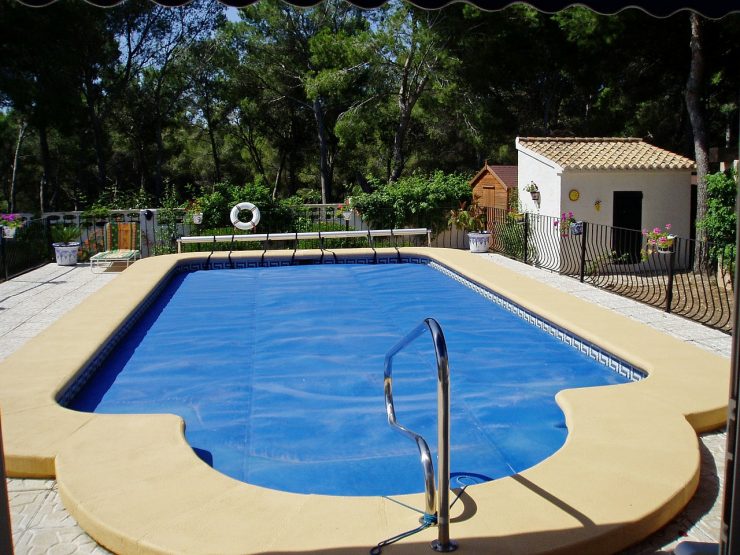
3. Switch Off Pool Lights
To stop Water Boatmen from discovering your pool in the first place, make sure you turn off your pool lights at night.
Or, if you want to keep them on overnight, keep them on the lowest settings under a pool cover. Water Boatmen will find it harder to spot the lights this way.
4. Keep Surrounding Vegetation Neat
An unexpected way to prevent Water Boatmen (and other bugs) from getting into your pool is to ensure that surrounding plant life, including your lawn, is trimmed.
Doing so will help stop plant detritus from shedding and floating into your pool. Plus, it makes this vegetation less attractive to other insects that might fall into the pool. (And accidentally add to the food supply for Water Boatman and Backswimmers).







